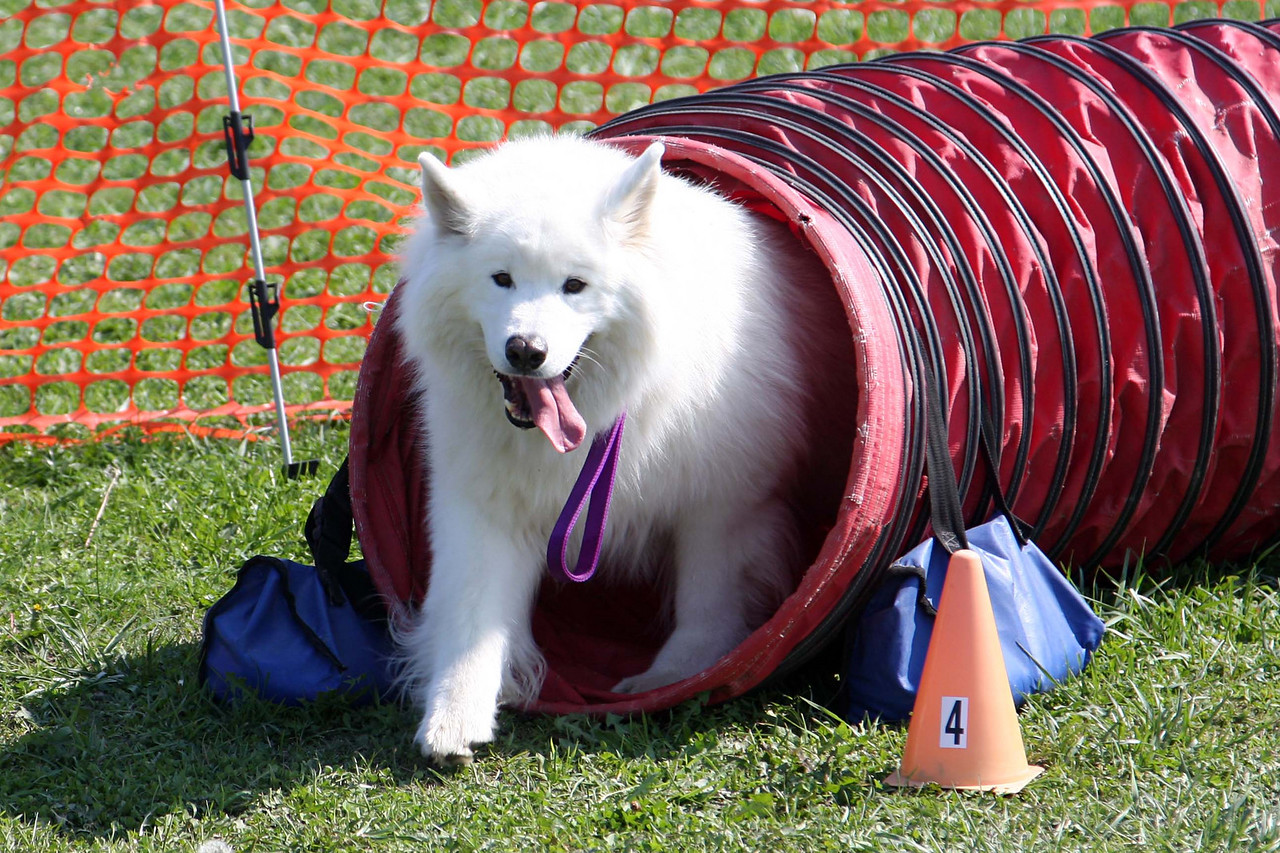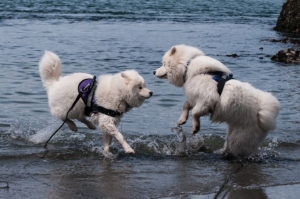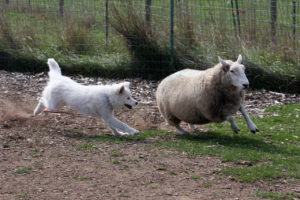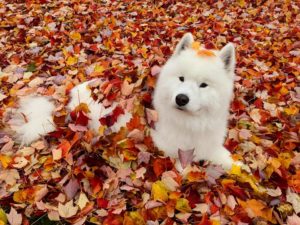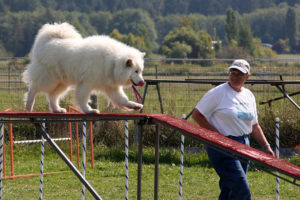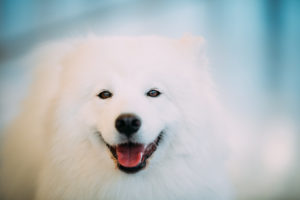Snow Dogs
Are you building sled dog team and looking for speed? Get a Siberian Husky. Are you more concerned with strength and stamina? Then go for the Alaskan Malamute. Looking for a dog that is somewhere in between, and is more human–oriented than dog–oriented (an important distinction in team building)? Your best bet is a Samoyed.
Or are you just looking for a nice dog to own as a pet, and think that one of these three breeds might be right for you? Then you should become acquainted with their most prevalent characteristics. In most of their traits, these dogs vary mostly by degree; if you have decided on a snow dog, you should talk with experts in all three breeds to narrow down which one to bring home.
Siberians, Malamutes and Samoyeds all originated in the northernmost parts of the world as sled dogs and companions; Siberians and Samoyeds were also used to herd reindeer. All three breeds still retain the instincts, abilities and appearances that made them such valued animals centuries ago, and all of these should be considered if you want a snow dog as a pet.
Appearance. Siberians and Malamutes come in a variety of colors, while Samoyeds are pure white or a mixture of white and cream. Their triangular, well–furred ears protect against biting winds and their deep–set, almond eyes protect against snow glare. (Blue eyes are only acceptable on the Siberian.) The dogs can wrap their long, curling tails around their noses for added warmth in bitter cold. All three have a long, harsh outer coat and a dense undercoat designed to protect them from the elements. (The Samoyed’s coat is more profuse than the Siberian’s or Malamute’s.) This undercoat will shed moderately throughout the year and profusely once or twice a year. If you don’t want dog hair all over your house, don’t get a snow dog! Regular brushing is essential to maintain coat condition and to prevent matting; on the other hand, these breeds tend to keep themselves very clean.
Size and Strength. The Malamute is the largest and most powerful of the three breeds, often weighing up to 85 pounds as compared to the 50–60 pound Siberian and Samoyed. All three breeds are very strong and retain a very strong pulling instinct, to which anyone who has ever walked one on leash can attest! Early training on leash is essential for any owner who would rather walk his snow dog than be walked by it. And, since they tend to be affectionate and boisterous, they should also be taught good manners early on so they can keep their size and strength under control.
Trainability. Dogs pulling a heavy sledge across uncertain terrain, with their master several yards behind them, have to be able to use their heads and make their own decisions. Today’s snow dogs retain that independent spirit. While intelligent, they can be more difficult to train than, for example, a retriever or a Border Collie. They are easily bored with repetition and may simply not see the point of some obedience exercises. (It is said that Samoyeds will not play fetch because they refuse to run after something that their owner has thrown away.) However, patience, persistence and a sense of humor can turn a snow dog into an obedient pet.
Temperament. Snow dogs are among the friendliest of dog breeds. Since they were bred to work in teams, they are pack–oriented and love to be around people and, in most cases, other dogs. They adore children, although play should be supervised due to their size. All of these traits make them great family pets; it also means that they should not be left alone for long periods of time. These dogs are happiest when allowed to live inside the house where they can be close to their people. And while their wolf–like appearance may intimidate some, these dogs are not good guard dogs; they see every stranger as a potential friend.
Activity Level. Be prepared to give your snow dog a lot of exercise. Siberians love to run, and Malamutes have the stamina to walk for miles without getting tired. Adequate daily exercise will keep these dogs in good physical condition and prevent the boredom which can lead to destructive behavior.
Bad habits. Snow dogs living in the Arctic protect themselves on cold nights by sleeping in holes dug into the snow. Your snow dog will amuse itself by digging holes in your yard or under your fence. Siberians in particular are great escape artists. All of these dogs love to eat (although they don’t require much food for their size) and will eat anything left out in the open; Samoyeds are known to be great “counter–surfers.” Consistent training and constructive activity can keep these bad habits to a minimum. Excessive barking is generally not a problem; however, these dogs tend to vocalize in other ways, making a “roo–roo” sound to express pleasure or attract attention. (Their owners usually see this as an endearing trait rather than a bad habit!)
In short, snow dogs are beautiful, charming, headstrong, and lovable–and often a challenge as well. Visit the parent club Web sites for more information, and to determine if there is no dog like a snow dog for you.


